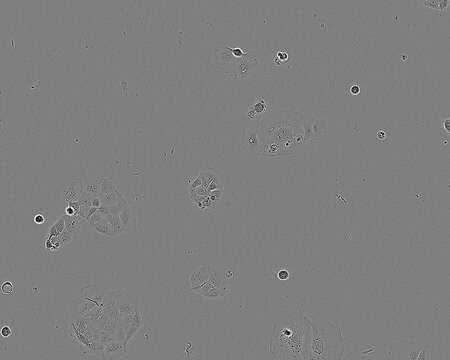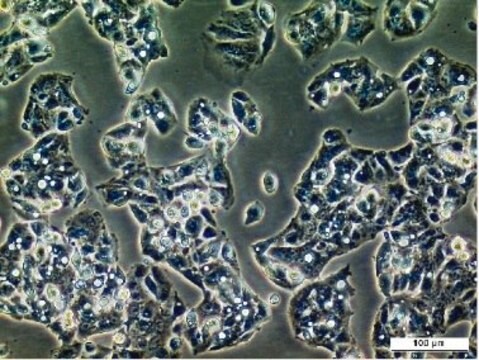COLO 201
87091201, human colon. Clumps of spherical cells in suspension, cuboidal cells in monolayer.
About This Item
Recommended Products
Product Name
COLO 201, 87091201
biological source
human colon
packaging
tube of 5 μg 87091201-DNA-5UG
pkg of vial of cells 87091201-1VL
growth mode
Adherent
karyotype
Triploid modal no. 71-78
morphology
Clumps of spherical cells in suspension, cuboidal cells in the monolayer
products
Carcinoembryonic antigen (CEA) less than produced by COLO 205
receptors
Not specified
technique(s)
cell culture | mammalian: suitable
relevant disease(s)
cancer
shipped in
dry ice
storage temp.
−196°C
Cell Line Origin
Cell Line Description
DNA Profile
CSF1PO: 11,12
D13S317: 10
D16S539: 12,13
D5S818: 10,13
D7S820: 9,10
THO1: 8,9
TPOX: 11
vWA: 15
Culture Medium
Subculture Routine
Other Notes
Choose from one of the most recent versions:
Certificates of Analysis (COA)
It looks like we've run into a problem, but you can still download Certificates of Analysis from our Documents section.
If you need assistance, please contact Customer Support.
Already Own This Product?
Find documentation for the products that you have recently purchased in the Document Library.
Our team of scientists has experience in all areas of research including Life Science, Material Science, Chemical Synthesis, Chromatography, Analytical and many others.
Contact Technical Service


